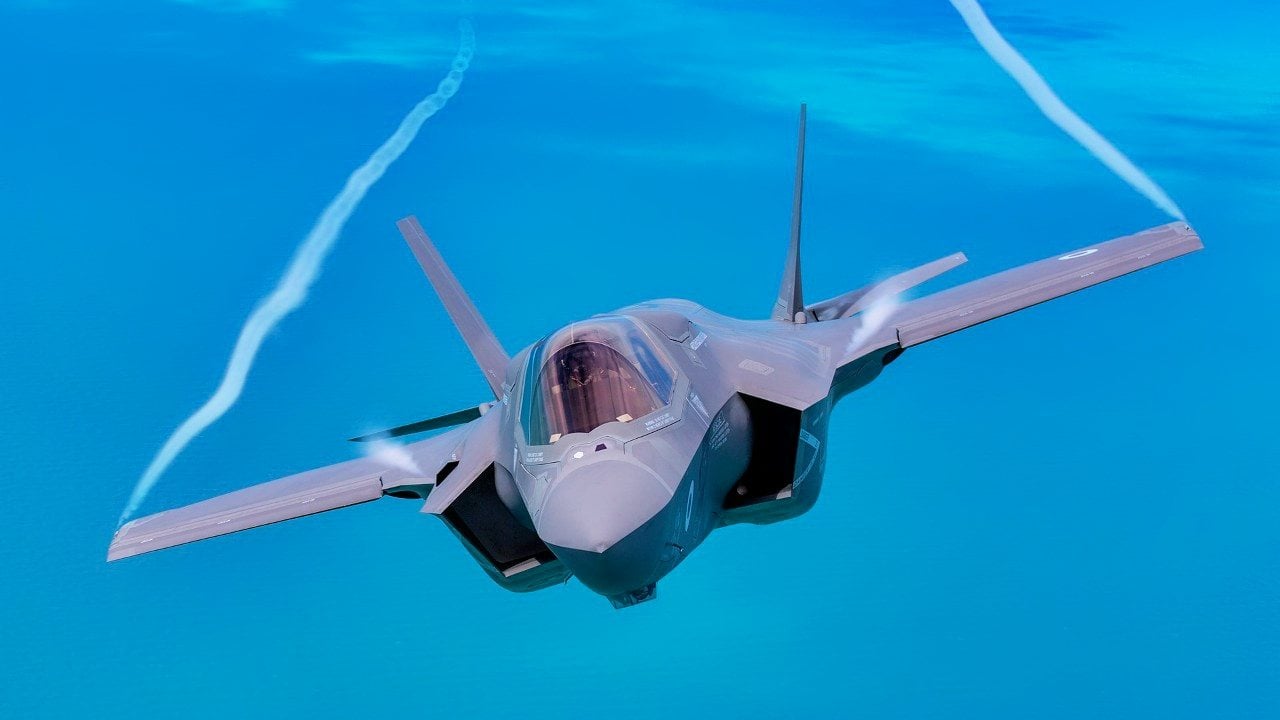U.S. Navy F-35 Fighter Jet Just Landed on a Japanese 'Aircraft Carrier'
The Japanese Maritime Self-Defense Force (JMSDF) reached a milestone in its aircraft carrier capabilities as a U.S. Navy F-35B Lightning II conducted its first landing on the JS Kaga (DDH-184).
What You Need to Know: The Japanese Maritime Self-Defense Force (JMSDF) reached a milestone in its aircraft carrier capabilities as a U.S. Navy F-35B Lightning II conducted its first landing on the JS Kaga (DDH-184).

-The Kaga, an Izumo-class multi-functional destroyer, has been undergoing modifications to support the short takeoff and vertical landing (STOVL) variant of the fifth-generation fighter. This move follows a similar test on JS Izumo in 2021, marking Japan’s first fixed-wing carrier operations since WWII.
-These tests enhance the JMSDF’s air capabilities and strengthen U.S.-Japan interoperability amid rising tensions in the East China Sea.
Japan Moves Closer to Carrier Operations with F-35B Landing on JS Kaga
The Japanese Maritime Self-Defense Force (JMSDF) moved one step closer to officially operating an aircraft carrier after a United States Navy F-35B Lightning II landed on the JS Kaga (DDH-184) for the first time on Sunday, the U .S. Navy announced. The Izumo-class multi-functional destroyer has been undergoing a conversion to operate with the short takeoff and vertical landing (STOVL) variant of the Lockheed Martin fifth-generation stealth fighter.
JS Kaga, which departed its homeport at Kure Naval Base, Japan, in September, arrived in San Diego earlier this month.
The U.S. Navy deployed personnel from the Air Test and Evaluation Squadron Two Three (VX-23), Naval Air Station Patuxent River (NAS Pax River), Maryland, including the F-35 Pax River Integrated Test Force (PAX ITF), to conduct the trials. Along with the F-35B aviators, the team was reported to include "aircraft maintainers, flight test engineers, flight test control engineers, flight deck personnel, logisticians, and others, with support from the U.S. Navy and Marine Corps."
The testing is expected to take about three weeks, and it will involve a variety of flight operations from the Japanese flattop.
"We are proud to be part of this joint effort to test the compatibility of F-35B aboard JS Kaga," said Seth Dion, Pax ITF team lead. "Our team has prepared meticulously for this mission, and we are committed to working closely with our allies to achieve our shared goals and strengthen our partnership."
Preparing for Japanese Aircraft Carrier Operations
Sunday's test follows a similar test conducted on JS Izumo (DDH-183) in October 2021, the first time a Japanese warship operated with a fixed-wing fighter since the Second World War.
"Changes to the Kaga included painting its flight deck with heat-resistant material that tolerates the F-35B's vectored-thrust engines, installing lights for nighttime operations, and reshaping the flight deck's bow from a trapezoid to a rectangular shape," the U.S. Navy announced.
The trials will also help "pave the way" for future joint operations between the U.S. Navy and the JMSDF.
"This test is essential for strengthening Japan's defense capabilities and is of utmost importance. We will do our best to achieve good test results together with the ITF," said Japan Maritime Self-Defense Force Capt. Shusaku Takeuchi, commanding officer, JS Kaga. "This test does not merely enhance the capabilities of the Maritime Self-Defense Force. It also improves the interoperability between Japan and the U.S., strengthening the deterrence and response capabilities of the Japan-U.S. alliance, thereby contributing to peace and stability in the Indo-Pacific region."

The JMSDF has operated the JS Izumo and JS Kaga since 2013 and 2015 respectively. Though the two warships may resemble modern aircraft carriers, were officially described by Tokyo as a "multi-purpose operation destroyer" due to their main purpose being to seek out and destroy enemy submarines in the self-defense of Japan with rotary aircraft.
Then in 2018, Tokyo approved a plan that would greatly enhance the capabilities of the warships – transforming them into de facto aircraft carriers. Each of the vessels has already begun a two-stage transformation that will allow them to operate fixed-wing aircraft – notably the F-35B Lightning II.
JS Izumo has undergone its initial modification stage, which included the application of heat-resistant paint to its flight deck, while JS Kaga has seen the aforementioned modification of its bow section – which has resulted in it earning comparisons to the U.S. Navy's Wasp-class and America-class amphibious assault ships.
Each of the converted warships could greatly enhance the JMSDF's ability to carry out air operations in the contested East China Sea – a move that has earned condemnation from Beijing.
Author Experience and Expertise: Peter Suciu
Peter Suciu is a Michigan-based writer. He has contributed to more than four dozen magazines, newspapers, and websites with over 3,200 published pieces over a twenty-year career in journalism. He regularly writes about military hardware, firearms history, cybersecurity, politics, and international affairs. Peter is also a Contributing Writer for Forbes and Clearance Jobs. You can follow him on Twitter: @PeterSuciu. You can email the author: [email protected].
Image Credit: Creative Commons and/or Shutterstock.


